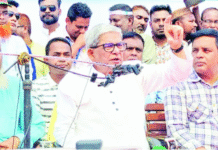
ADELAIDE, Australia — Cricket and gambling have always been inextricably linked. In 1744, the sport’s laws were codified largely to make betting on the game easier, and allegations of match-fixing have dogged the sport ever since. Most recently, cricket was ravaged by a series of scandals affecting the top of the men’s international game in the 1990s and early 2000s.
Now cricket officials fear a new fixing epidemic is not far off. This year, five Pakistani international cricketers have been suspended for breaking anticorruption protocols or banned for fixing matches during the Pakistan Super League. In the last two months alone, three international captains reported being approached by match-fixers, including two — Zimbabwe’s Graeme Cremer and Pakistan’s Sarfraz Ahmed — from the dozen elite nations who play Test cricket, the five-day version of the sport.
While all three captains reported the approaches to cricket authorities — the offers were said to be for sums of up to $150,000 — the incidents reinforced the troubling concern that cricket is still regarded as ripe for fixing.
“It’s a reminder that the threat of corruption in the game is not going away,” said Tony Irish, the executive chairman of the international cricket players’ association. “Cricket as a whole has been slow to adjust to the risks of corruption.”
Irish said that he believes there is “a serious risk to the reputation of the entire game.”
The International Cricket Council’s Anti-Corruption and Security Unit, which polices the sport, has expressed alarm at the recent spike in incidents, and it is currently conducting seven investigations into suspected fixing.
In September, the unit gained the power to request that players, coaches and administrators surrender data from their mobile phones, including from the messaging service WhatsApp, during investigations of suspected corruption cases. While it cannot compel suspects to hand over their devices, any who refuse face a charge of noncooperation, which could lead to a ban of up to two years.
Safeguarding the integrity of cricket has never been harder. During the mid-1990s, the golden age for cricket fixers, virtually all betting in cricket was concentrated on matches involving the nine leading nations. As such, the potential pool of players of interest to criminals looking to fix matches numbered in the hundreds. Now, with the growth of newer forms of the sport and the higher profile of women’s and junior matches, the pool of potentially corruptible players is in the thousands.
Twenty20, the short format of the game begun in 2003, has galvanized domestic cricket — and the amount bet on matches. Around $200 billion a year is gambled on cricket worldwide, according to estimates by the Qatar-funded International Centre for Sport Security, with a sizable portion of it drifting down to lower-profile games, both in official and unofficial tournaments, that are broadcast to eager fans, sometimes over social media platforms. Women’s cricket and men’s junior games are also considered increasingly vulnerable; in legal markets alone, $7 million was bet on last month’s under-19 Asia Cup in Malaysia.
At the same time, technology has allowed corrupting matches to become more intricate, as fixers can manipulate a portion of matches — so-called spot fixes — to lock in a profit regardless of who wins. And the I.C.C.’s anticorruption unit is only responsible for monitoring international matches; national boards are in charge of anticorruption activity in their domestic leagues.
“If the threat remains in international cricket then there should be even greater concerns about the leagues, where there are no minimum consistent standards,” Irish said. “In some leagues the anticorruption measures are good, and in others they aren’t. There are no enforced minimum standards, and there are no minimum player education requirements.”
For example, neither the Bangladesh Premier League nor the Pakistan Super League — which have both had fixing cases — invites the I.C.C.’s unit to monitor their matches or support their own security measures. And even those involved in running Twenty20 domestic teams are not immune from corruption: In 2015, two Indian Premier League cricket teams were suspended after senior officials, including a co-owner of one of the sides, were found guilty of betting and of passing on inside information to bookmakers.
But for all these new challenges, the problems remain very familiar. Most countries that play top-level cricket lack specific laws against match-fixing, which can make it harder to prosecute fixers. Most fundamentally, gambling in India remains illegal — rendering it nearly impossible to follow betting patterns, and thus trace suspicious bets in that underground economy.
Worldwide, only around 15 percent of sports betting is done through legal means, according to I.C.S.S. estimates. For cricket that figure is likely to be even lower, owing to the sport’s huge popularity in India and other countries where betting is effectively untraceable. So while the International Cricket Council, like other sports bodies, is optimistic about its use of algorithms to identify suspicious betting patterns, those methods can succeed only in markets where legal gambling can be tracked, and monitored.
The article appeared in the NY Time on 12.10.17









